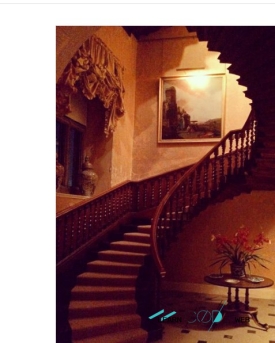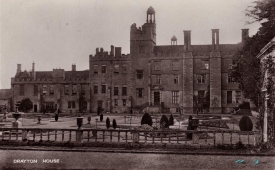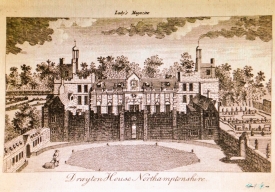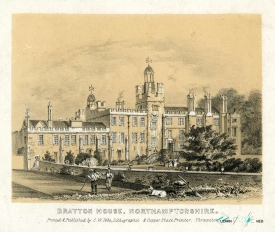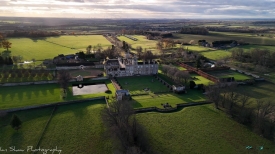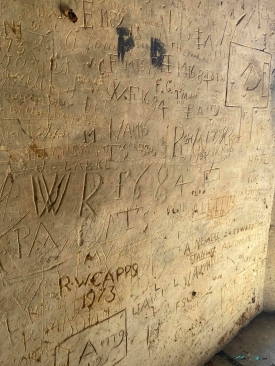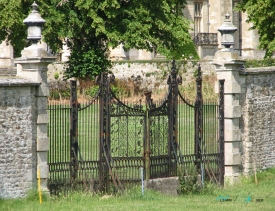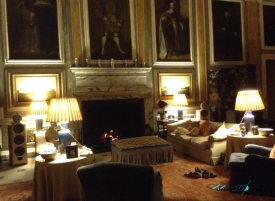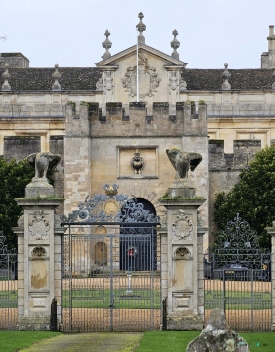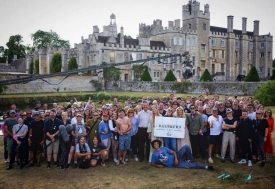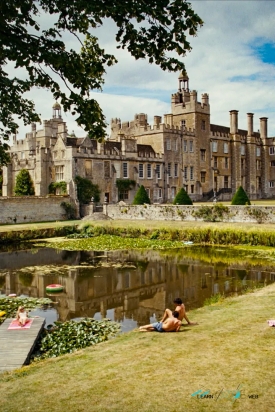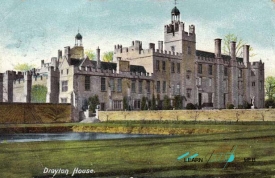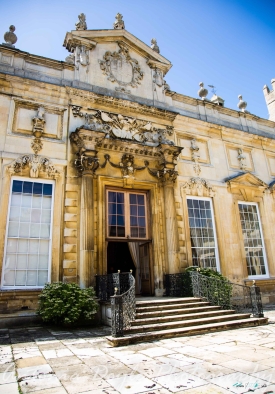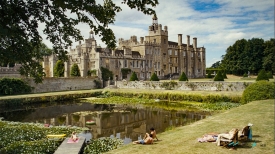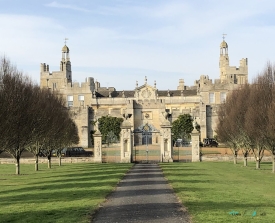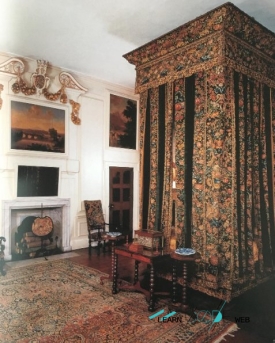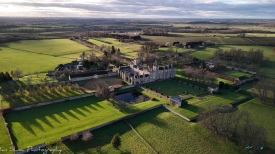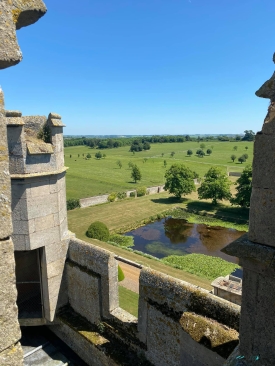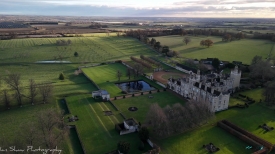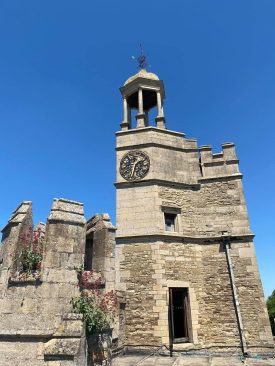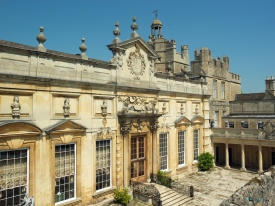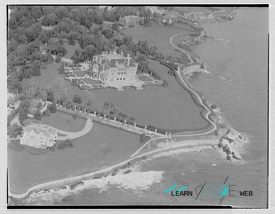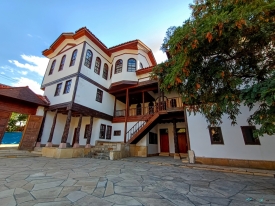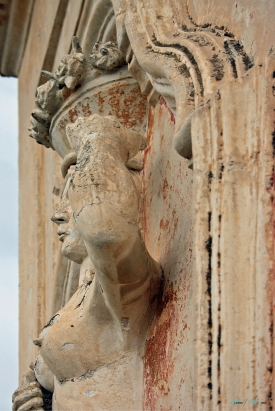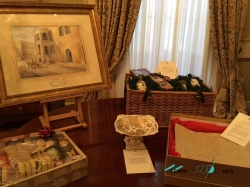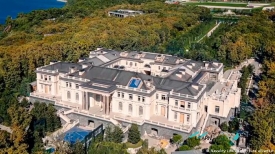ABOUT Drayton House
Nestled amid the scenic landscapes of Northamptonshire, England, Drayton House emerges as a Grade I listed country house, resonating with the echoes of various historical periods. A mere mile southwest of Lowick village, this architectural gem has been described by Nikolaus Pevsner as Northamptonshire's most impressive medieval mansion.
Architectural connoisseur Gervase Jackson-Stops termed it "one of the best-kept secrets of the English country house world," while Horace Walpole affectionately referred to it as "a most venerable heap of ugliness, with many curious bits." The house's rich history dates back to 1328, and its silhouette bears the imprints of master builders across centuries.
The architectural evolution of Drayton House reads like a captivating novel, with each chapter shaped by notable figures such as John Webb, William Talman, and George Devey. From medieval origins, the house embraced the rare English Baroque style in the late 17th and early 18th centuries, leaving behind a unique spiral cantilever oak staircase.
Drayton House's history is a tapestry woven with the threads of inheritance, passing through the hands of the De Veres, Greens, Mordaunts, Staffords, Mordaunts again, and finally, the Stopford Sackville family. Since its last sale in 1361, Drayton House has changed ownership only through inheritance, a testament to the enduring legacy of the families that have called it home.
The narrative unfolds through medieval inheritances, political allegiances, and familial disputes. The Mordaunts, with their intricate connections to royalty and political intrigue, played a prominent role in shaping the mansion's destiny. The 3rd Lord Mordaunt, recognized as a "Builder" by Halstead, introduced significant alterations in the late 16th century, leaving behind towers, porches, and the North wing.
The house's later years saw the intersection of its fate with the Germain family, notable for Sir John Germain's controversial position in court. Lady Elizabeth Germain, affectionately known as Betty, inherited the estate and maintained it according to her late husband's wishes. Upon her passing, the house transitioned to the Sackville family, later becoming the Stopford Sackvilles.
Throughout the late 19th century, Drayton Park, the 200-acre park surrounding the house, hosted the North Northamptonshire LTC Tournament, adding a sporting chapter to its storied history.
In the realm of architecture, Drayton House underwent significant transformations during the late 17th and early 18th centuries, embracing the rare English Baroque style. The interior boasts a distinctive spiral cantilever oak staircase and an embroidered State Bed, while rooms redecorated in the Adam style by the Sackville family add further charm.
As the custodians of Drayton House, the Stopford Sackville family has demonstrated a commitment to its preservation and restoration. From Charles Lionel Stopford Sackville to the current owner, Drayton House's legacy continues, captivating visitors with its timeless elegance and serving as a silent witness to the unfolding centuries of English history.
The park surrounding Drayton House, known as Drayton Park, has played its own role in history. Originally emparked in 1327, the park has expanded to about 200 acres, hosting events like the North Northamptonshire LTC Tournament in the late 19th century.
Beyond its architectural grandeur and historical significance, Drayton House has taken center stage in the cinematic realm. The film "Saltburn," written and directed by Emerald Fennell, has utilized the regal backdrop of Drayton House, casting it as a character in its own right and further immortalizing the mansion in the world of cinema.
Drayton House is located 2 km south-west of the village of Lowick, which lies on the A6116 between Thrapston (3 km to the south-east) and Corby. The A14 runs 2 km south of Drayton, with Kettering located 8 km to the west. The park, encompassing an area of approximately 120 hectares, is situated in open countryside, and its boundaries align with field edges.
The primary approach to Drayton House is from Lowick to the north-east, following Drayton Road. This route traverses the park's open grassland along the south side of a shallow valley, turning north to reach the main south forecourt – the principal entrance front since the mid-17th century – and the west side of the house. Another, now unused, drive extends south-east to the Thrapston to Twywell road, featuring a stone lodge built in 1908. Additional drives lead south-east, south-west, and north-west from the house, with Drayton Cottages, a pair of estate cottages constructed in 1908, positioned along the south-west drive.
Architectural connoisseur Gervase Jackson-Stops termed it "one of the best-kept secrets of the English country house world," while Horace Walpole affectionately referred to it as "a most venerable heap of ugliness, with many curious bits." The house's rich history dates back to 1328, and its silhouette bears the imprints of master builders across centuries.
The architectural evolution of Drayton House reads like a captivating novel, with each chapter shaped by notable figures such as John Webb, William Talman, and George Devey. From medieval origins, the house embraced the rare English Baroque style in the late 17th and early 18th centuries, leaving behind a unique spiral cantilever oak staircase.
Drayton House's history is a tapestry woven with the threads of inheritance, passing through the hands of the De Veres, Greens, Mordaunts, Staffords, Mordaunts again, and finally, the Stopford Sackville family. Since its last sale in 1361, Drayton House has changed ownership only through inheritance, a testament to the enduring legacy of the families that have called it home.
The narrative unfolds through medieval inheritances, political allegiances, and familial disputes. The Mordaunts, with their intricate connections to royalty and political intrigue, played a prominent role in shaping the mansion's destiny. The 3rd Lord Mordaunt, recognized as a "Builder" by Halstead, introduced significant alterations in the late 16th century, leaving behind towers, porches, and the North wing.
The house's later years saw the intersection of its fate with the Germain family, notable for Sir John Germain's controversial position in court. Lady Elizabeth Germain, affectionately known as Betty, inherited the estate and maintained it according to her late husband's wishes. Upon her passing, the house transitioned to the Sackville family, later becoming the Stopford Sackvilles.
Throughout the late 19th century, Drayton Park, the 200-acre park surrounding the house, hosted the North Northamptonshire LTC Tournament, adding a sporting chapter to its storied history.
In the realm of architecture, Drayton House underwent significant transformations during the late 17th and early 18th centuries, embracing the rare English Baroque style. The interior boasts a distinctive spiral cantilever oak staircase and an embroidered State Bed, while rooms redecorated in the Adam style by the Sackville family add further charm.
As the custodians of Drayton House, the Stopford Sackville family has demonstrated a commitment to its preservation and restoration. From Charles Lionel Stopford Sackville to the current owner, Drayton House's legacy continues, captivating visitors with its timeless elegance and serving as a silent witness to the unfolding centuries of English history.
The park surrounding Drayton House, known as Drayton Park, has played its own role in history. Originally emparked in 1327, the park has expanded to about 200 acres, hosting events like the North Northamptonshire LTC Tournament in the late 19th century.
Film Stardom: Drayton House in Saltburn by Emerald Fennell
Beyond its architectural grandeur and historical significance, Drayton House has taken center stage in the cinematic realm. The film "Saltburn," written and directed by Emerald Fennell, has utilized the regal backdrop of Drayton House, casting it as a character in its own right and further immortalizing the mansion in the world of cinema.
How to get to Saltburn, sorry, to Drayton House
Drayton House is located 2 km south-west of the village of Lowick, which lies on the A6116 between Thrapston (3 km to the south-east) and Corby. The A14 runs 2 km south of Drayton, with Kettering located 8 km to the west. The park, encompassing an area of approximately 120 hectares, is situated in open countryside, and its boundaries align with field edges.
The primary approach to Drayton House is from Lowick to the north-east, following Drayton Road. This route traverses the park's open grassland along the south side of a shallow valley, turning north to reach the main south forecourt – the principal entrance front since the mid-17th century – and the west side of the house. Another, now unused, drive extends south-east to the Thrapston to Twywell road, featuring a stone lodge built in 1908. Additional drives lead south-east, south-west, and north-west from the house, with Drayton Cottages, a pair of estate cottages constructed in 1908, positioned along the south-west drive.
The Best Pictures of Drayton House
Videos of Drayton House







